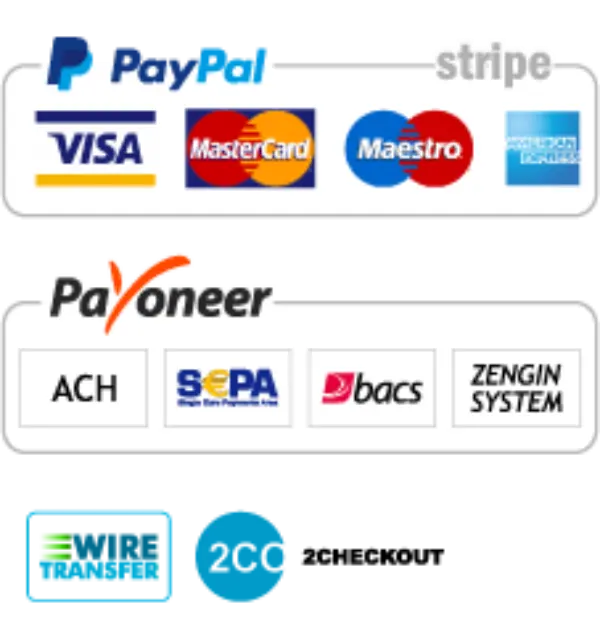Smart Sensors Market Size - Global Industry, Share, Analysis, Trends and Forecast 2025 - 2033
Published :
Report ID:
Pages :
Format :
Smart Sensors Market Size - Global Industry, Share, Analysis, Trends and Forecast 2025 - 2033
Report Coverage
- Industry Dynamics
- Market Size and Forecast Data
- Segment Analysis
- Competitive Landscape
- Regional Analysis with a Niche Focus on Country-Level Data
- High Level Analysis - Porter's, PESTEL, Value Chain, etc.
- Company Profiles of Key Players
- Option to Customize the Report As Per Your Specific Need
Request Sample Report
The Global Smart Sensors Market Size accounted for USD 63.4 Billion in 2024 and is estimated to achieve a market size of USD 269.8 Billion by 2033 growing at a CAGR of 17.6% from 2025 to 2033.
Smart Sensors Market Highlights
- The global smart sensors market is expected to reach USD 269.8 billion by 2033, with a CAGR of 17.6% from 2025 to 2033
- The North America smart sensors market was valued at approximately USD 22.8 billion in 2024
- The Asia-Pacific market is projected to grow at a CAGR of over 19% from 2025 to 2033
- The image sensors type sub-segment accounted for 21% of the market share in 2024
- Increasing demand for smart agricultural solutions encourages the adoption of precision farming sensors is a popular market trend that fuels the industry demand

Smart sensors are also considered to be a combination of the sensor and disturbance system as smart sensors. Smart sensors are used primarily for digital processing, i.e. for analog and digital transfer. Increasing use of sensing devices and process controls in such sectors will make them useful for different industries, such as consumer electronics, automobile, manufacturing, medical, security and defense and entertainment. Smart sensors also assist in the two-ways communication and logic function for a variety of activities, including decision making.
Global Smart Sensors Market Dynamics
Market Drivers
- Growing adoption of IoT and AI-driven automation is boosting demand for smart sensors across industries
- Rising integration of smart sensors in consumer electronics enhances user experience and efficiency
- Increasing demand for industrial automation and predictive maintenance fuels market growth
- Expansion of smart cities and connected infrastructure accelerates the deployment of intelligent sensor systems
Market Restraints
- High initial costs and complexities in integration hinder widespread adoption in small-scale industries
- Data privacy and security concerns related to smart sensor connectivity pose challenges
- Limited standardization across industries creates interoperability issues for sensor manufacturers
Market Opportunities
- Advancements in miniaturization and energy-efficient sensor technologies open new application areas
- Growing healthcare sector adoption of smart sensors for patient monitoring drives market expansion
- Rising investments in autonomous vehicles create significant opportunities for smart sensor innovation
Smart Sensors Market Report Coverage
|
Market |
Smart Sensors Market |
|
Smart Sensors Market Size 2024 |
USD 63.4 Billion |
|
Smart Sensors Market Forecast 2033 |
USD 269.8 Billion |
|
Smart Sensors Market CAGR During 2025 - 2033 |
17.6% |
|
Smart Sensors Market Analysis Period |
2021 - 2033 |
|
Smart Sensors Market Base Year |
2024 |
|
Smart Sensors Market Forecast Data |
2025 - 2033 |
|
Segments Covered |
By Type, By Technology, By Component, By Industry Vertical, and By Geography |
|
Regional Scope |
North America, Europe, Asia Pacific, Latin America, and Middle East & Africa |
|
Key Companies Profiled |
Sensirion AG, Omron Corporation, Infineon Technologies AG, General Electric, Siemens AG, Robert Bosch GmbH, STMicroelectronics, Analog Devices, Inc., Honeywell International Inc., and NXP Semiconductors. |
|
Report Coverage |
Market Trends, Drivers, Restraints, Competitive Analysis, Player Profiling, Covid-19 Analysis, Regulation Analysis |
Smart Sensors Market Insights
The factor that is boosting the growth of global smart sensors market are rising adoption of sensors in automobile and consumer electronics sectors. Furthermore, growing use of smart sensors in mobile devices and smartphones enhances global market demand. The increased demand for sensors in defense, logistics and healthcare also drive the development of the global smart sensors market. However, the growth of the global market also increases with the energy saving capabilities of intelligent sensors. At the other hand, the global smart sensor development is slowed by a high range of smart sensors.
Consumer electronics hold major contributors to the smart sensor market during forecast period. The consumer electronics industry is changing rapidly and continuously, with the rising competition between players. At present, consumer’s electronics suppliers are under tremendous pressure to put into the market innovative and distinct products. The essential devices used in both of these devices to maintain consumer comfort and control are smart sensors, such as motion, temperature, picture, touch and pressure sensors.
 Smart Sensors Market Segmentation
Smart Sensors Market Segmentation
The worldwide market for smart sensors is split based on type, technology, component, industry vertical, and geography.
Smart Sensors Market By Type
- Pressure Sensors
- Temperature & Humidity Sensors
- Flow Sensors
- Image Sensors
- Touch Sensors
- Water Sensors
- Motion & Occupancy Sensors
- Position Sensors
- Light Sensors
- Ultrasonic Sensors
- Others
According to smart sensors industry analysis, the image sensors category dominates the market, owing to its numerous applications in consumer electronics, automotive, healthcare, and industrial automation. These sensors are critical components of cellphones, cameras, security surveillance systems, and advanced driver assistance systems (ADAS) in vehicles. The increased demand for high-resolution imaging in medical diagnostics, such as endoscopy and X-ray imaging, is fueling the market. Furthermore, the proliferation of smart cities and AI-powered image recognition technology has expedited adoption. The growing usage of image sensors in industrial automation for quality inspection and machine vision strengthens their competitive position. Technological improvements, such as complementary metal-oxide-semiconductor (CMOS) sensors, help to increase efficiency and price, hence generating demand. With constant innovation, this segment is projected to maintain its lead in the smart sensor market.
Smart Sensors Market By Technology
- CMOS
- MEMS
- Others
The micro-electro-mechanical systems (MEMS) sector accounts for the majority of the smart sensor industry, thanks to its small size, high precision, and energy efficiency. MEMS-based smart sensors are widely employed in the consumer electronics, automotive, healthcare, and industrial sectors. These sensors are used in smartphones and wearable devices to track motion, recognize gestures, and monitor environmental conditions. MEMS sensors have applications in the automotive industry, such as airbag deployment, tire pressure monitoring, and sophisticated driver aid systems.
Furthermore, MEMS technology improves medical devices, such as pacemakers and diagnostic tools, by giving precise sensing capabilities. The increased need for smaller and low-power sensors boosts the segment's position. With developments in nanotechnology and IoT integration, MEMS-based smart sensors' applications are expanding, ensuring long-term growth.
Smart Sensors Market By Component
- Analog-to-Digital Converters (ADC)
- Digital-to-Analog Converters (DAC)
- Transceivers
- Amplifiers
- Microcontrollers
- Others
The microcontrollers sector is predicted to increase at a rapid pace in the smart sensors market throughout the forecast period. Microcontrollers are essential for processing sensor data and enabling real-time decision-making in a wide range of applications, including consumer electronics, automotive, healthcare, and industrial automation. The growing use of IoT devices and smart home technologies has fueled demand for microcontroller-based smart sensors. Microcontrollers improve ADAS, engine control systems, and car entertainment.
Furthermore, their use in wearable medical devices as glucose monitors and heart rate sensors drives market growth. Advances in low-power and high-performance microcontrollers, as well as increased investment in AI-powered smart devices, fuel growth. As businesses shift towards automation and intelligent networking, the need for microcontrollers in smart sensors is predicted to continuously increase.
Smart Sensors Market By Industry Vertical
- Industrial Automation
- Biomedical & Healthcare
- Consumer Electronics
- Building Automation
- Automotive
- Aerospace & Defense
- Others
The consumer electronics category is anticipated to be the largest in the smart sensors market, owing to the increased adoption of smart gadgets, wearables, and home automation goods. Smart sensors are required in smartphones, tablets, smartwatches, and fitness trackers to enable capabilities such as touch sensitivity, motion tracking, facial recognition, and ambient lighting detection. The growing demand for AI-powered and IoT-enabled products drives market expansion.
The rise of smart home technology, such as voice assistants, security cameras, and smart lighting systems, also contributes to this segment's supremacy. Advances in miniaturized and energy-efficient sensors have improved gadget performance, making them more enticing to customers. With continuing technical advancements and increased customer desire for smarter, connected products, the customer electronics industry is projected to maintain its market leadership.
 Smart Sensors Market Regional Outlook
Smart Sensors Market Regional Outlook
North America
- U.S.
- Canada
Europe
- U.K.
- Germany
- France
- Spain
- Rest of Europe
Asia-Pacific
- India
- Japan
- China
- Australia
- South Korea
- Rest of Asia-Pacific
Latin America
- Brazil
- Mexico
- Rest of LATAM
The Middle East & Africa
- South Africa
- GCC Countries
- Rest of the Middle East & Africa (ME&A)
Smart Sensors Market Regional Analysis
The smart sensors market analysis is provided for major regional markets including North America, Europe, Asia-Pacific, Latin America, and Middle East & Africa. For each region, the market size for different segments has been covered under the scope of report.
The overall smart sensors market in North America is projected to dominate during the forecast period. The growth of the North America smart sensors market is projected to be fueled by factors like the high use of smart sensors in aerospace and defense and the increasing need for energy-efficient products. Moreover, the growth of the smart sensors market in North America is anticipated to be significantly increased in technology. In the forecast period, Europe is expected to record the fastest growth rate. Factor such as increased demand for several advanced electronic equipment is expected to trigger the growth of the global smart sensors market during the forecast period.
However, long service life is an significant aspect that is supposed to encourage the growth in the future of the global smart sensor market. During the forecast period, the Asia Pacific smart sensor market is projected to see substantial growth. Factors including the use of smart sensors and CMOS technologies are expected to improve the development of the Asia Pacific smart sensor market.
Smart Sensors Market Players
Some of the top smart sensors companies offered in our report include Sensirion AG, Omron Corporation, Infineon Technologies AG, General Electric, Siemens AG, Robert Bosch GmbH, STMicroelectronics, Analog Devices, Inc., Honeywell International Inc., and NXP Semiconductors.
Frequently Asked Questions
What was the market size of the global smart sensors in 2024?
The market size of smart sensors was USD 63.4 Billion in 2024.
What is the CAGR of the global smart sensors market from 2025 to 2033?
The CAGR of smart sensors is 17.6% during the analysis period of 2025 to 2033.
Which are the key players in the smart sensors market?
The key players operating in the global market are including Sensirion AG, Omron Corporation, Infineon Technologies AG, General Electric, Siemens AG, Robert Bosch GmbH, STMicroelectronics, Analog Devices, Inc., Honeywell International Inc., and NXP Semiconductors.
Which region dominated the global smart sensors market share?
North America held the dominating position in smart sensors industry during the analysis period of 2025 to 2033.
Which region registered fastest CAGR from 2025 to 2033?
Asia-Pacific region exhibited fastest growing CAGR for market of smart sensors during the analysis period of 2025 to 2033.
What are the current trends and dynamics in the global smart sensors industry?
The current trends and dynamics in the smart sensors industry include growing adoption of IoT and AI-driven automation, rising integration of smart sensors in consumer electronics, and increasing demand for industrial automation and predictive maintenance.
Which type held the maximum share in 2024?
The image sensors held the maximum share of the smart sensors industry.


